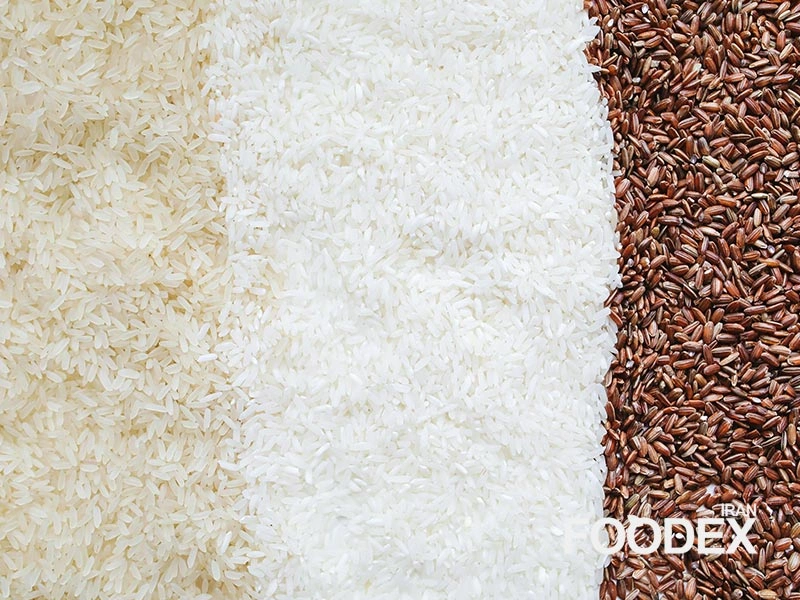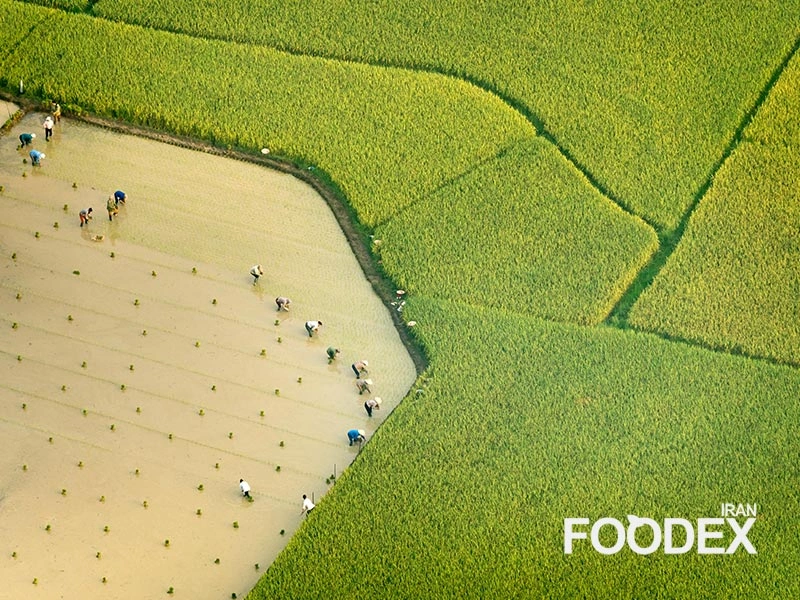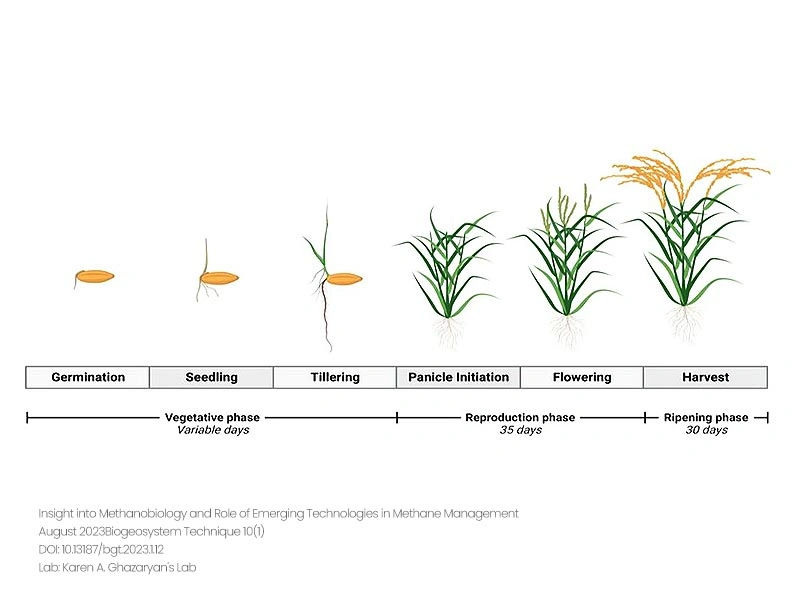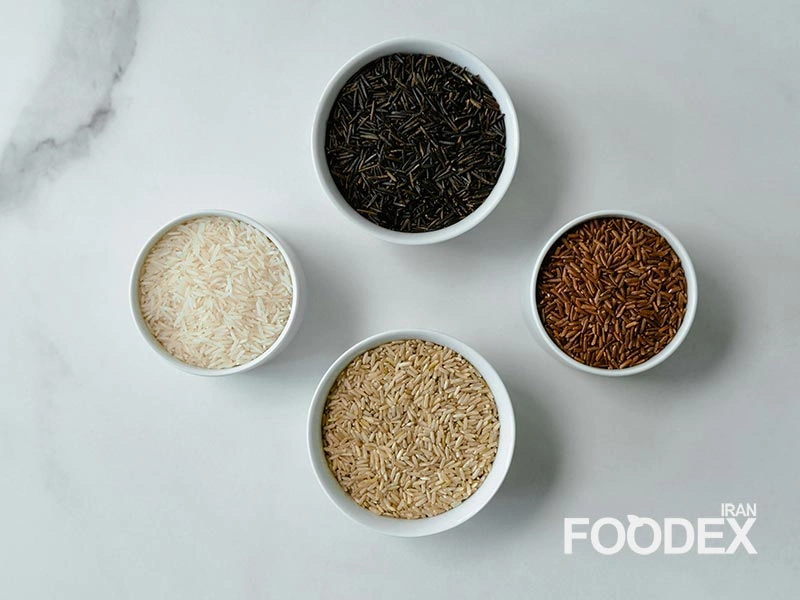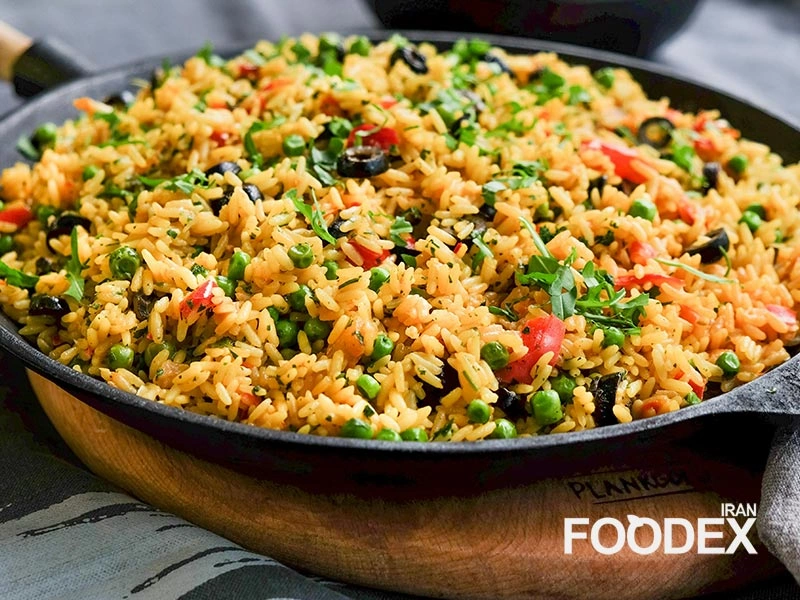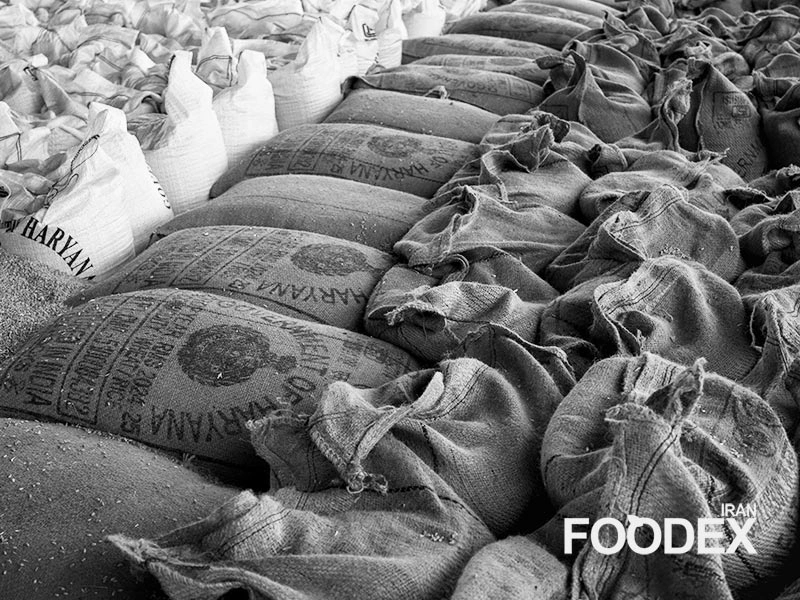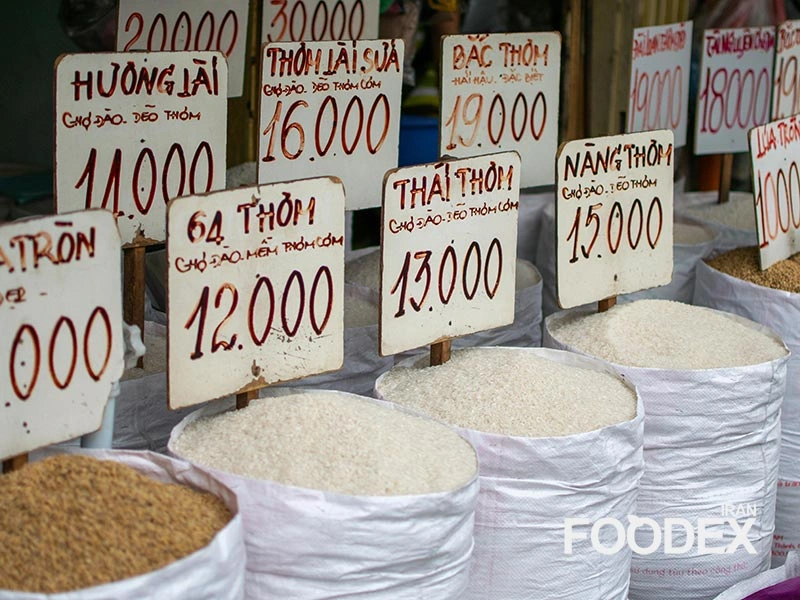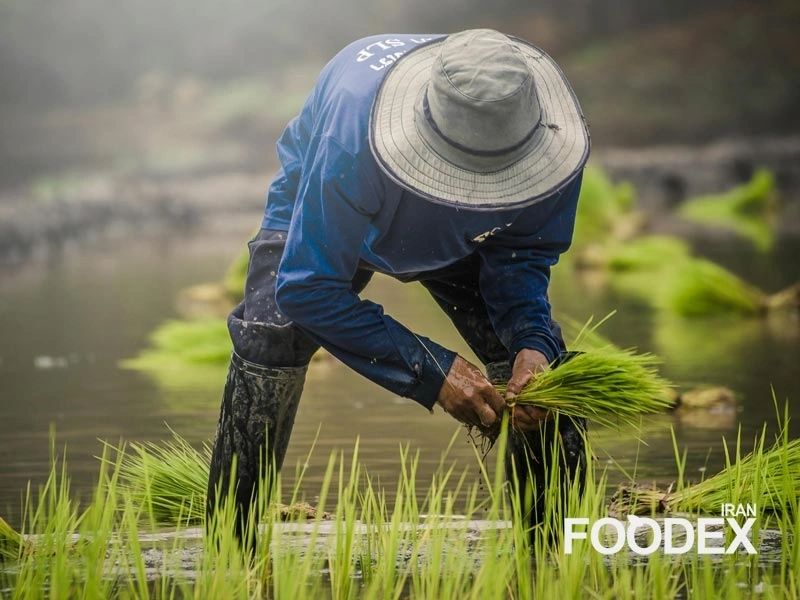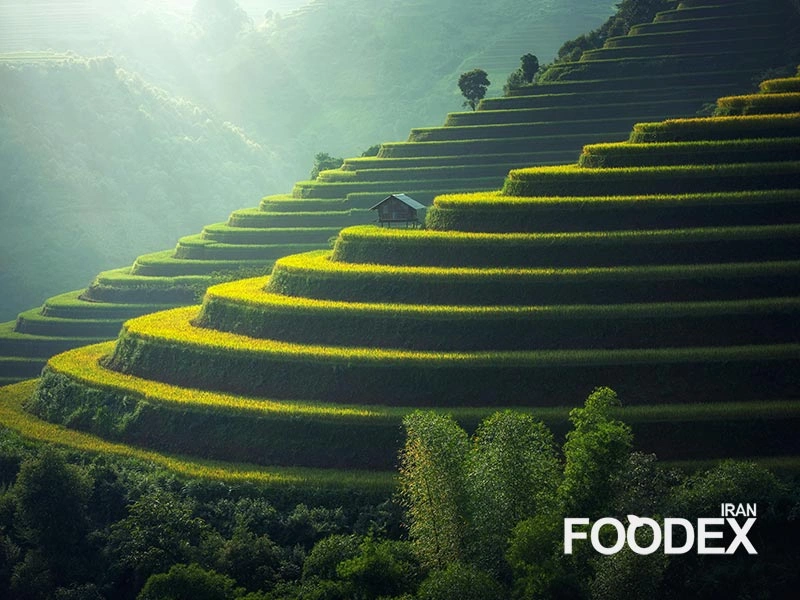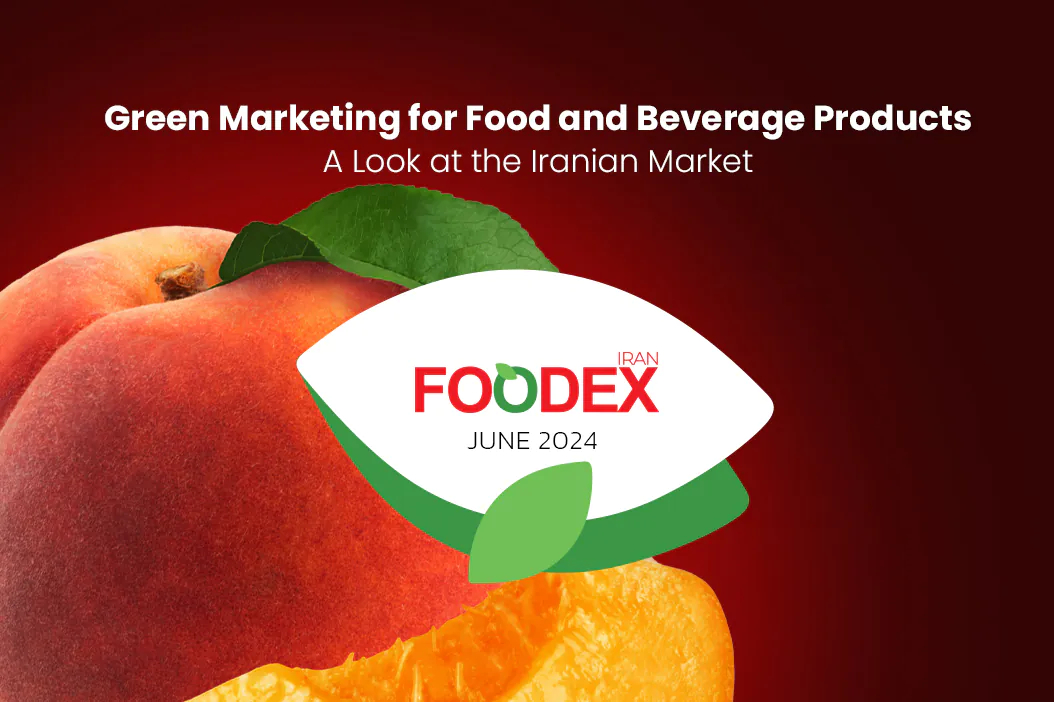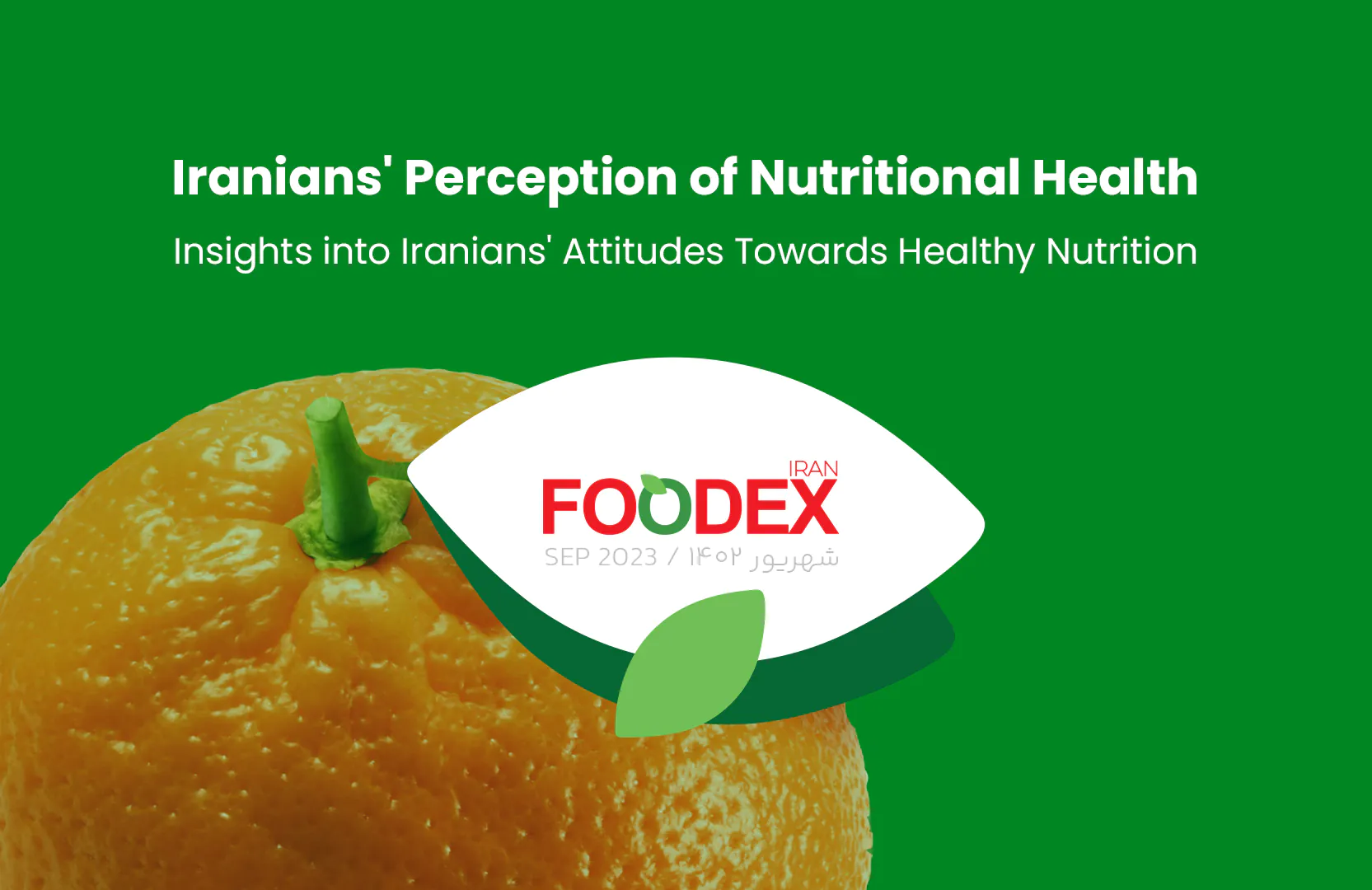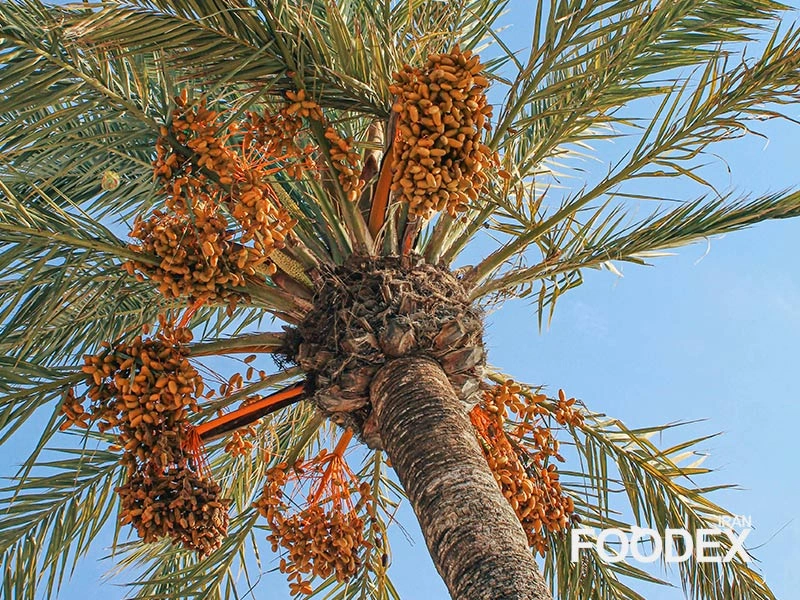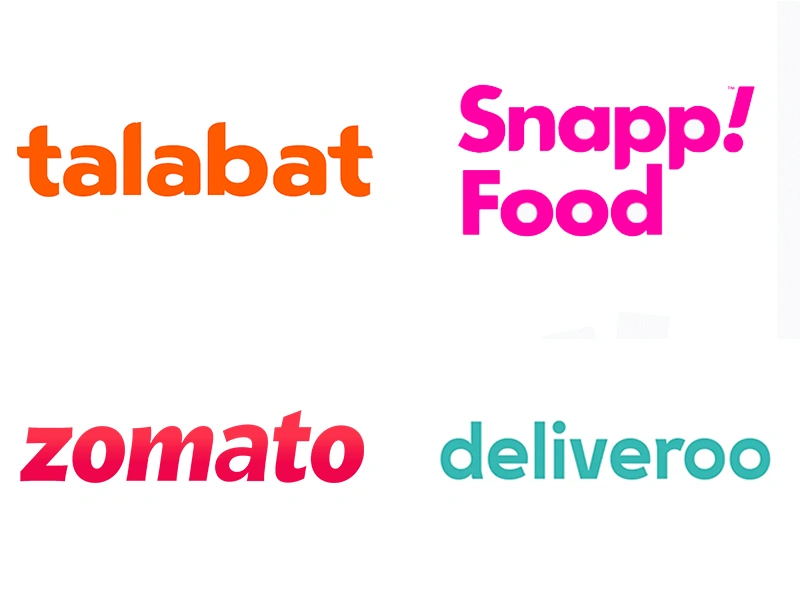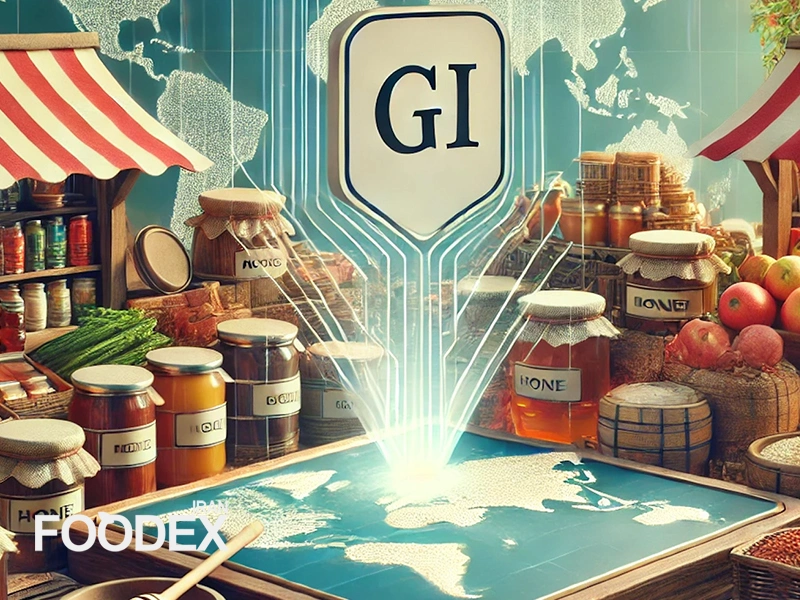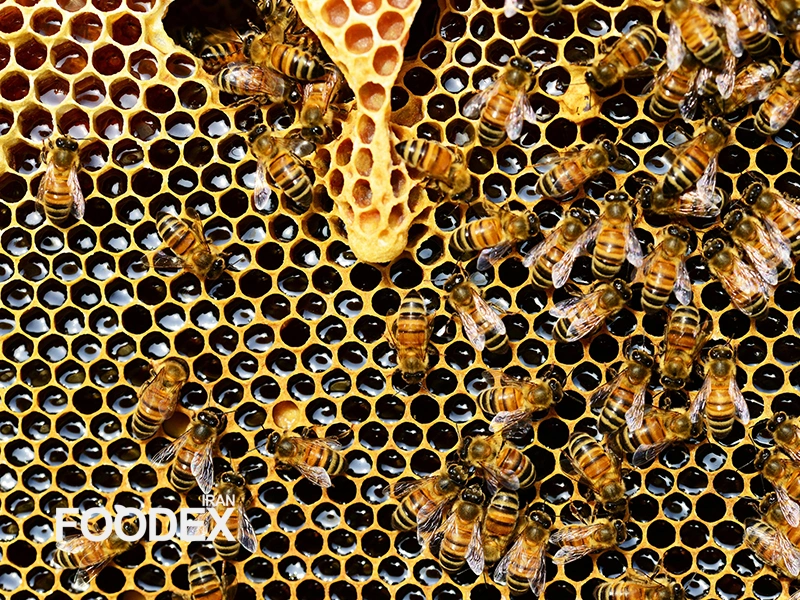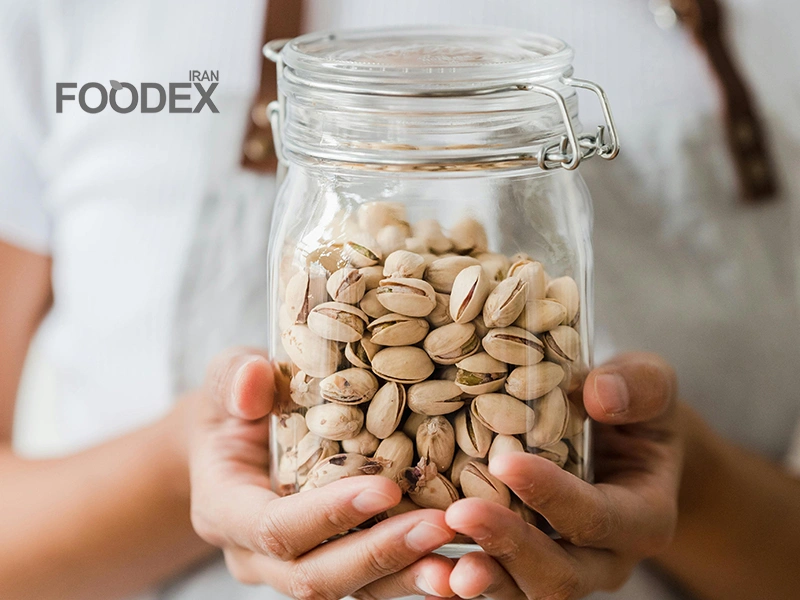Rice (Oryza sativa) maintains its position as the principal dietary calorie for over half of the world’s human population while serving as a primary economic and security foundation for global food needs.
The simple grain exists today as the central component of multiple interconnected challenges and opportunities throughout production, processing, and trade distribution systems.
Anyone working in the dynamic food and agriculture sector needs to develop a comprehensive understanding of multiple aspects of rice, including agricultural traits and environmental needs, global market patterns, and supply chain intricacies. Foodex Magazine presents an extensive data-based exploration into rice’s world in this publication.
The document compiles historical insights, scientific formulas, and information on rice breeding diversity and nutrition research. It proceeds with a detailed analysis of cultivation techniques and production methods, market dynamics, and economic patterns, and it examines the entire supply chain infrastructure for rice from Iran to worldwide markets.
This work aims to provide helpful knowledge that will enhance understanding and decision accuracy about this vital product.
Ancient History of Rice
Origins: A strategic grain emerged at this point in history.
Archaeological findings with genetic assessments indicate rice cultivation started ten thousand years ago in East and Southeast Asia’s moist lowlands, especially the Yangtze River basin of modern China.
Early human communities turned the wild plant into a domesticated crop, which both transformed agriculture and sparked significant changes within the trajectory of human civilization.
The development of agriculture led human communities toward evolved settlements after their primitive hunting practices. This breakthrough established the necessary base to form bigger, more complex civilizations.
Through its historical origin, we understand rice’s foundational position in ancient civilizations while learning about its significant genetic variety.
Plant breeders are drawing advantages today from this diversity while working to develop strong and high-yielding varieties against current agricultural threats.
Global Expansion: A Journey Across Cultures and Continents
The story of rice spread beyond China’s boundaries throughout history.
Through thousands of years, this valuable harvest followed a lengthy historical voyage throughout ancient Asia along trading routes as people moved between territories and through cultural exchange and military operations.
Rice progressively found its position within various food systems and agricultural operations throughout India, Southeast Asia, Vietnam, Thailand, Indonesia, and the Middle East.
This particular crop’s early spread reformed farming techniques and dietary patterns for these cultures while establishing the first trading systems in which rice functioned as a strategic commodity.
Rice began its worldwide spread during the Age of Exploration, which saw maritime trade routes expand throughout the 16th century.
European merchants and explorers spread the valuable grain to all three continents during the early modern era, bringing it to southern Carolina, Brazil, and significant territories across Africa.
This expansion succeeded because rice demonstrated advanced abilities to thrive throughout multiple ecological spaces and provide substantial food resources for expanding populations.
The seed transfer, indigenous cultivation knowledge, and environmental adaptation required difficulty during this process.
After this movement produced new markets alongside intercontinental supply chains, rice cemented its position as a global agricultural commodity.
The Strategic Importance of Rice: The Foundation of Food Security for Billions
Rice exceeds mere grain consumption status to maintain its significant position in worldwide food systems. The United Nations Food and Agriculture Organization (FAO) emphasizes in its 2023 report how rice functions as the central element of food security for more than 3.5 billion people, making up 50 percent of the Earth’s population, because they use it as their primary dietary energy source daily. The deep food security of Asian nations depends heavily on rice because they produce 90% of the world’s rice, and China and India lead all producers in this sector.
Throughout human society, rice is the primary calorie source, constituting more than 20% of total energy consumption. Yet, this reliance reaches much higher levels in nations classified as developing. Rice is the top globally significant commodity because countries overwhelmingly depend on it. Major disruptions in rice production caused by climate change or other factors and global price movements create extensive consequences throughout commodity markets while affecting both social stability in rice-consuming nations and worldwide hunger and malnutrition reduction efforts. The food industry’s supply chain analysis and risk management require a complete comprehension of rice dominance and identified vulnerabilities.
Scientific Understanding of Rice: Unlocking a Biological Engine
A comprehensive understanding of rice production challenges and processing opportunities depends on first knowing the plant’s biological structure and its fundamental identity.
Botanical Classification: Rice’s Place in the Plant Kingdom
One billion people receive nutrition from Oryza sativa, the scientific name for cultivated rice. As a member of the broad plant group Poaceae, the important crop rice maintains ties to wheat, barley, and corn. Rice is an annual herbaceous plant that follows an entire lifecycle from seed germination to grain development during a rotating agricultural cycle. Understanding Oryza sativa’s scientific identity provides critical information about its ecological requirements, farm potential, and climate tolerance.
Morphological Structure: A Closer Look at the Rice Plant’s Components
The rice plant operates as an efficient life system, which relies on every component to achieve survival, growth, and produce grain.
Roots: Rice develops shallow fibrous roots that spread across a wide area to create dense networks in surface soil layers. Through its unique root system, rice plants can quickly absorb large amounts of water and nutrients from their typical flooded environment, which demonstrates their need for lots of water yet emphasizes the crucial nature of water management in rice farming.
Stem (Culm): The rice plant’s hollow stem, or culm, displays cylindrical shapes in scientific terms with segmented structures. The plant’s stem grows between 1 and 1.8 meters, but its height depends on its variety and external environmental factors. The rice stem requires powerful strength and flexible elements to bear heavy grain clusters and fight against lodging, which happens when plants topple because of rain or wind forces. Mechanical harvesting operations become less effective during lodging incidents, alongside decreases in grain quality.
Leaves: Rice leaves are elongated and arranged alternately, allowing them to operate as the plant’s primary photosynthetic factory. Their extensive surface area helps them efficiently absorb sunlight, supporting the plant’s growth and grain development. The membership of physical features alongside chemical characteristics on leaf surfaces determines how prone plants become to specific pests and diseases.
Panicle and Grain: Rice plants produce their grains and store them within panicles, which serve as the plant’s flowering structures. Each rice variety’s essential market traits and agricultural attributes include grain dimensions and format, hull pigmentation, and thousand-grain bulk and length relation to the width scale. Rice features influence agricultural productivity measured in tons per hectare, yet simultaneously control both commercial recovery rates during milling operations and cooking properties, resulting in market value determinations.
Types of Rice: A World of Flavor, Color, and Origin
Rice diversity worldwide reaches such levels that it requires multiple classification systems. Knowledge of these classifications becomes fundamental to understanding market patterns, culinary applications, and nutritional features. Food scientists classify rice primarily through two established standards.
Classification by Color and Degree of Processing
The evaluation method reveals the retained or discarded grain layers post-harvest, therefore altering rice’s visual properties, cooking attributes, and nutritional aspects.
White Rice: Rice of this kind represents the leading type among its variety. Milling procedures eliminate all three hull bran germ components from rice products. The manufacturing technique lengthens product durability and reduces preparation time to 15–20 minutes; however, it depletes the grain of vital B vitamins and minerals in addition to its dietary fiber. Its unassuming flavor profile and adjustability across diverse cuisines establish white rice as the essential component for numerous dishes worldwide.
Brown Rice: Removing exterior layers in brown rice preserves the grain’s vital nutrient-rich bran and germ components. Despite processing differences, brown rice contains more dietary fiber, extra vitamins, and mineral nutrients than typical white rice. Brown rice features a nuttier flavor profile, firmer texture, and a 40- to 50-minute cooking duration. The health-conscious market demonstrates increasing demand for this type of brown rice.
Black Rice: Historically described as “Forbidden Rice” because of its scarcity and monetary worth, it obtains its dark pigment from the potent antioxidant anthocyanin. This gourmet rice’s aroma and sweet, nutty flavor stand out while its distinct fragrance seeks consumer interest. Black rice comes from Asian roots, especially China.
Wild Rice: Wild rice stands apart from other rice types according to botanical classification rules. The seed of the Zizania genus aquatic grass reaches a significant height. At the same time, it grows mainly in Canada and the United States’ Great Lakes area. The grains in wild rice appear as long, slender, dark-colored structures with a combination of chewy texture and smoky flavor. Due to its high protein and fiber content, wild rice finds its place in rice blends, specialty dishes, and salads.
Classification by Variety and Region of Cultivation (Origin)
A rice variety’s genetic composition and regional climatic conditions determine crucial characteristics, including flavor, aroma, cooking quality, and visual appearance of the grain.
Notable Iranian Varieties
Multiple rice varieties evolved through long cultivation histories in northern Iran’s fertile paddies with a focus on the provinces of Gilan and Mazandaran. Long-grain varieties with exceptional aroma, cooking quality, and intense flavor make up most Iranian rice types.
Tarom: The mature Mazandaran province grows Tarom rice as an authentic indigenous selection, producing aromatic results when cooked. The Tarom-e Mahalli, Tarom-e Atari, and other varieties make up the local subtypes of this cultivar.
Hashemi: Hashemi gained popularity from its creator, born near Gilan, because it extends gracefully during cooking while producing abundant yields and delivering a rich, aromatic experience.
Sadri: The family of premium but low-yielding rice varieties from Gilan comprises Dom-Siah, Shah-Pasand, and Hasan-Saraei. Farmers value these rice varieties because of their rare aroma and extraordinary stretching capabilities, leading to increased market profitability.
Dom-Siah: The Sadri family is one of the premium categories because its paddy stalks show dark bristle features at the end. It’s mainly cultivated in Gilan.
The brief introduction to high-yield varieties Fajr and Shiroudi provides information about their breeding origins and their reduced aromatic characteristics.
Most Well-known Iranian Rice Companies
Visit Online ExhibitionInternationally Famous Varieties
Some rice types have become culinary icons of their respective countries:
Basmati: Culinary history in India and Pakistan features Basmati as their symbolic rice variety because of its extended shape and powerful perfume. After cooking, Basmati rice shows dramatic lengthening alongside unique aromatic scents that reach their optimal fragrance through aging.
Jasmine: The variety has a moderate length grain structure that produces jasmine-floral scents during cooking, along with a smooth, sticky texture. Thai people first cultivated this variety, yet farmers across Cambodia, Laos, and Vietnam also cultivate it today. South East Asian cuisine features this staple ingredient.
Arborio: This Italian Po Valley-origin plant produces short, round, floury rice with excellent liquid absorption properties. Its ability to absorb liquids perfectly creates a creamy consistency, making risotto possible with this variety. You can find Vialone Nano and Carnaroli among Italian rice varieties, which share similarities.
Japanese or Sushi Rice (Japonica): These Japanese and Korean short-grain varieties develop exceptional stickiness after cooking, thus making them perfect for sushi and Korean cuisine. Travelers can find short-grain rice produced primarily in Japan and Korea. Still, it grows in China and California as well.
Rice Farming and Production: A Precise Process Requiring Smart Management
Complete rice production sustainability and economic viability require extensive knowledge and effective field management beyond seed planting. For successful field management, every grower must deeply understand the crop’s ecological needs and take educated steps throughout all cultivation stages. Rice producers must make each field-related decision because these actions directly influence yield, product quality outcomes, and direct and indirect operational expenses, which further affect the value chain’s performance.
Climatic and Environmental Requirements: The Ideal Growth Conditions
Rice maintains its best development when grown under environmental conditions between 20°C and 35°C during each growing season. Growth stresses the plant while diminishing grain production when temperatures exceed or fall below the specified range. The growth of rice attains its best performance under relative humidity conditions at 70% to 80%. Rice requires water as its fundamental climatic requirement because it needs extreme water dependency to survive. Water requirements for rice production reach 1,500 to 2,500 liters per kilogram, depending on regional climate, combined with crop variety and essential irrigation management practices, as reported by the International Rice Research Institute (IRRI). Rice requires sizeable amounts of water for cultivation, which results in vulnerability to drought and climate shifts, and shows why efficient water management becomes crucial for sustainable, low-cost rice cultivation. Weather forecasting alongside climate data analysis provides essential information for farmers to make planting decisions while reducing agricultural production uncertainties.
Key Stages of Production in the Rice Field: Step by Step to Harvest
The paddy field rice cultivation process requires a series of interconnected procedures through which precise timing determines the final agricultural result.
Land Preparation: During this stage, practitioners work to establish perfect environments for root development, together with optimal water management practices. Deep tillage, precise leveling, bunding, and field compartmentalization are essential to this stage. Traditional flooded systems use puddling to lower soil permeability, fight early disease, and boost nutrients during the puddling procedure before soil testing, which allows farmers to use the obtained information for effective fertilizer management strategies.
Planting: Seed selection begins by choosing pure, healthy, certified seeds of specific varieties that match regional requirements and market needs. There are two principal techniques for planting production:
a) Transplanting: A nursery cultivates seedlings until workers manually or mechanically move them to farm fields for final planting. Planting methods using seedlings produce better plant growth and heavier harvests at a cost of elevated labor requirements.
b) Direct Seeding: The field receives seed plantings as rows or complete distributions. The lower labor expenses of this method require extra attention to weed management practices. Iranian growers must establish planting times during early spring or mid-spring and select suitable plant densities to reach maximum yield levels based on variety details.
Crop Management: Plant maintenance procedures and seasonal requirements operate throughout the growing season to ensure plant health and deliver proper care.
Irrigation Management: Water supply at proper times remains an absolute requirement for success. Traditional flooded systems persist, yet Alternative Wetting and Drying protocols present an effective combination of yield performance with decreased water consumption and diminished methane outputs.
Soil Fertility Management: Plant requirements determine balanced nutrient input decisions through appropriate testing procedures and selection between chemical, organic, and biological fertilizers.
Pest, Disease, and Weed Control: Flawless pest and weed control based on IPM & IWM methods, which mix cultural techniques with biological interventions and minimal chemical applications, requires continuous field observations to prevent damage and lower pesticide usage. Wise decisions emerge from the examination of tracking information.
Harvesting: Different varieties’ characteristics and local weather elements determine when the harvest will occur within 120 to 180 days from planting. Early and delayed harvest times negatively affect yield totals and product quality. Harmful changes in grain moisture levels at harvest time significantly affect post-milling quality and broken grain counts. Rice harvesting processes can utilize manual efforts, but these methods need substantial labor. At the same time, specialized mechanical combines and harvesters increase speed and reduce labor costs. However, precise control is required to avoid losses during operation. Farmers start drying their paddy right after the harvest because this initial process brings the crop into the processing and supply chain system.
Nutritional Value of Rice
A billion people consume rice as their daily source of vital nutrients and energy. Rice assessment requires separate classification of white versus brown types alongside process-effect analysis on product nutrients.
Macronutrients: Carbohydrates at the Core
Rice functions primarily as a carb-rich food where starch makes up most of its content, delivering fast energy for the human body. White rice has minimal protein and little fat content compared to other carbohydrates. Based on reference data, the typical macronutrient content in 100 grams of unenriched cooked white rice appears in the table below.
| Approximate Amount per 100g | Main Component |
| 130 kcal | Energy (Calories) |
| 28 g | Total Carbohydrates |
| 2.7 g | Protein |
| 0.3 g | Total Fat |
| 0.4 g | Dietary Fiber |
Source: USDA FoodData Central – average values for medium-grain cooked white rice.
Key point: The bran and germ components contained in brown rice create a higher dietary fiber content, reaching approximately 1.5 to 2 grams per 100 grams of rice after cooking. Concrete benefits from dietary fiber consumption include improved digestion, controlled blood sugar performance, and feeling fuller.
Micronutrients: The Role of Bran and Enrichment
When rice processors remove the bran and germ layers during white rice production, they retain essential B vitamins (thiamin B1, niacin B3, and pyridoxine B6) together with vital minerals such as magnesium, phosphorus, manganese, selenium, and zinc. Brown rice naturally exceeds white rice in terms of nutrient content.
Several nations choose to enrich white rice because processing removes key nutrients from the grain. The enrichment process reintroduces iron and specific B vitamins, including thiamin B1, niacin B3, and folic acid B9, to the rice grain. Verifying white rice’s nutritional label demands a search for the term “enriched.”
Health Benefits and Considerations: More Than Just Energy
Rice serves to deliver quick-digesting carbohydrates for energy. Yet, its health attributes depend extensively on which rice variety you choose.
Digestive Health: Brown rice’s higher fiber content maintains a healthy digestive system while protecting against constipation.
Heart Health: Evidence from many research reports demonstrates that whole grains, including brown rice, reduce heart disease risks because they contain fiber, magnesium compounds, and other protective elements.
Blood Sugar and Weight Management: The high fiber content in brown rice acts as a sugar absorption brake and induces feelings of fullness, supporting healthy blood sugar levels and body weight control.
Important note: Brown rice provides superior health advantages; however, enriched white rice becomes suitable when combined with other healthful dietary choices. Although dietary variety remains essential for healthy eating, the main rule is not to depend heavily on any one type of food, including rice.
Cooking and Preparing Rice: A Global Art of Flavor from a Single Grain
Various kitchens worldwide recognize rice as an adaptable ingredient that local chefs use to create their region-specific flavors. The culinary world depends on rice to create everyday and elaborate culinary creations. Mastering multiple rice cooking methods while selecting appropriate techniques for your specific rice variety leads to perfect results in your end product.
Fundamental Rice Cooking Methods Across Cultures
Basic cooking techniques form the foundation for nearly all worldwide rice preparations, despite an unlimited array of creative possibilities in rice culinary practices.
Absorption Method (Kateh / Absorption): Rinse-and-cook is indisputably the leading rice preparation technique throughout the world. Rice receives a controlled water addition according to discoveries about rice variety types, terrain level, and the extent of its freshness. After boiling water, the pot gets a cover to finish cooking while maintaining ultra-low heat until all liquid evaporates. The absorption method perfectly serves white rice, including Basmati, Jasmine, and Iranian grains, which produce separate, delicate grains cooked to full tenderness yet still have an al dente texture. Brown rice needs additional water and cooking time because the bran layer remains intact during this cooking process.
Boiling and Draining Method (Aabkesh): Iranians frequently use this technique to cook formal and special rice offerings, including “polo” and “chelo”. Rice is added to a considerable amount of boiling water and needs to be partially cooked until it reaches the “al dente” point. The rice goes into a separate cooking pot containing butter, oil, and other ingredients to create tahdig, and is steamed until ready. The grains separate through this process to reach their maximum length, which is best when preparing premium Iranian rice types such as Sadri or Tarom.
Steaming Method: Asian cooking traditions use this cooking method primarily with glossy varieties of rice. Boiling water heats special bamboo or similar baskets containing soaked rice for steaming preparation—a sticky and cohesive texture results from this cooking method.
Pilaf Method: The traditional cooking method appears in the Middle Eastern, Central Asian, South Asian regions, and Iran. The cooking process starts with raw long-grain Basmati and Iranian rice, which is sautéed in oil or butter with onion or spices to acquire a thin fat coating. Hot water, chicken broth, or meat stock enters after the sautéed rice at the beginning of the absorption cooking process. Initial exposure to heat performs dual functions: it enhances the taste and prevents grains from sticking together.
Risotto Method: Short-grain, high-starch rice varieties, such as Arborio, Carnaroli, or Vialone Nano, produce this Italian culinary dish. Hot water or broth absorption happens while you consistently stir the sautéed rice. The amylopectin starch inside the rice is released through this method, resulting in a smooth, creamy texture with perfect consistency.
The Art of Tahdig: Tahdig represents a fundamental element of Persian cooking in every rice dish prepared using boiling and draining techniques. You start by preparing the base layer of your pot. Use oil to grease a surface consisting of bread, potatoes, saffron mixed with yogurt, or plain rice. When the rice steams, this bottom layer develops into shiny golden brown crispness while acquiring deep flavor complexity.
Key Evaluation Criteria for Rice from the Perspective of Consumers and the Market
The food industry and consumers value cooking quality as a crucial indicator of rice quality because it determines consumer choice of brands and prices of rice products.
The Role of Rice in Global Food Culture
Each culinary culture worldwide has adopted rice as a distinctive part of its traditional cuisine.
Iran: Different rice preparations (baghali polo, zereshk polo, albaloo polo, sabzi polo, tahchin, chelo with kebabs or stews, rice-based soups, and frittatas) make up a large portion of Iranian cuisine.
The Indian Subcontinent: Spice-infused biryanis from Hyderabad and Lucknow coexist with pulao, khichdi, and fermented rice-lentil foods such as dosa and idli.
East Asia: Onigiri, Japanese sushi, Korean kimbap, bibimbap, Chinese fried rice, rice cakes, desserts, and mochi complete the Asian culinary lineup.
Southeast Asia: Southeast Asia offers two staple dishes: Malaysian nasi lemak and nasi goreng from Indonesia, Thai cooking with khao pad and mango sticky rice, and Vietnamese pho with rice noodles.
Europe: European cooking traditions feature Italian risotto alongside Spanish Valencian paella. At the same time, the UK and Scandinavian countries produce rice puddings together with Portuguese arroz doce.
The Americas and the Caribbean: The cooking traditions of Louisiana feature Jambalaya, while Carolina presents Hoppin’ John, with Costa Rican Gallo Pinto and numerous rice dishes across Latin America.
The Rice Market and Economy: The Pulse of a Strategic Commodity
The dynamics shaping the rice market and economy demand fundamental knowledge to serve farmers, traders, large food companies, and policymakers actively involved in the food supply chain. Food security is directly influenced by this strategic crop’s price, availability, and stability, which also affects production costs and business profitability. This section explores the broader dimensions of rice production, trade, and the key factors shaping the rice market both globally and within Iran.
Global Rice Production Outlook: Asia’s Unrivaled Dominance
The world’s food security base relies on Rice as one of three main staple food items, along with wheat and corn. Milled rice production for human consumption has demonstrated stability in recent years as it oscillates at 510 to 520 million metric tons per annum (FAOSTAT estimates between 2023-2024). Its massive production volume demonstrates Rice’s essential position in global food systems.
Rice production worldwide shows an exceptionally regionalized distribution pattern. Rice output from Asia comprises 90% of the global total. China and India lead global rice production by producing more than half of the world’s Rice while having essential control over worldwide supply-demand relations. Three major rice producers follow China and India, as Indonesia stands alongside Bangladesh and Vietnam. Vietnam’s rice production serves both domestic demand needs and generates export quantities. The historical production region contains such high levels of rice cultivation that it creates extreme vulnerability to local events that disrupt supply networks, regardless of whether these disturbances stem from climate events, political actions, or health emergencies. Comprehensive threat evaluations are now necessary.
The world’s rice cultivation depends primarily on two subspecies: Indica and Japonica. Two main subspecies dominate global rice production: Indica, the foundation of long-grain agriculture in Asia’s tropical regions. Japonica includes medium to short-grain types cultivated primarily in East Asian temperate areas and several distinctive rice-producing regions worldwide. Global production statistics show that Indica represents a substantially greater number of fields than Japonica.
International Rice Trade: A Small but Highly Strategic Market
The international rice trade footprint stands out because of its small magnitude compared to total global rice production and major grains, including wheat and corn. Due to recent statistical data from the FAO and USDA, less than 10% or 50 to 55 million tons annually of total global rice production enters international trade pathways (Source: FAO and USDA statistics). The global rice market operates with such limited trade activity that it creates a ‘thin market’ structure that overreacts to supply and demand fluctuations within key export and import regions and trade policy changes. The rice market is sensitive to immediate price volatility because of this condition. The market has restricted volume yet maintains an annual total worth of traded Rice that reaches tens of billions of dollars, demonstrating its significant economic role.
Major Exporters: A Highly Concentrated Supply Side
A few regional powers command the majority share of global rice export markets:
India: As the globe’s biggest rice exporter, India actively sells Basmati and non-Basmati rice varieties.
Thailand: As an experienced exporter with a solid reputation for its top-quality white Rice and fragrant Jasmine rice.
Vietnam: This producer succeeds in Asian and African markets by offering high volumes at competitive export pricing.
Pakistan: The Basmati and Indica segments make up most of Pakistan’s export business and position it as a significant international exporter.
United States: The exporter’s portfolio consists primarily of medium- and long-grain non-aromatic Rice while maintaining positions among the leading international exporters.
Global rice exports amount to 75% or more because these five countries maintain their dominance in the market and possess strong supply-side market control simultaneously.
Major Importers: A More Diverse Demand Side
The import market displays a broader geographic distribution, yet several nations dominate this trade:
China: The large Asian nation leads production and imports according to global rankings since its massive population requires substantial rice purchases, but sometimes creates import surpluses through strategic measures.
Philippines: Geographic limits, along with food security needs for its prominent citizenry, position this country among the leading importers of rice throughout the world.
African Nations: Nigeria, Côte d’Ivoire, and Senegal represent major importers in West Africa, where intensified demand exists.
Middle East: Rice imports remain high in this area because the local agricultural output is restricted.
European Union: The EU functions primarily as an import bloc that heavily imports distinctive rice types such as Basmati and Jasmine.
Iran: Iran is one of the world’s top rice importers because it imports long-grain and Basmati rice to supply its domestic market.
The Strategic Role of Reserves
The analysis of global rice markets depends heavily on understanding stockpile and strategic reserve quantities maintained by leading rice-producing and consuming countries, especially China and India. Nationwide stockpile sizes and governmental stock management policies produce psychological and real-world effects on market anticipation and international price stability.
Price Drivers and Market Volatility in the Rice Sector
Both international and domestic rice prices consist of multiple elements influencing prices alongside essential agricultural products. The petite proportions of global trade and production volumes (explained through the “thin market” phenomenon) cause prices to experience high fluctuations. Time-series prediction and strategic risk reduction require knowledge about these influential factors.
Supply and Demand Fundamentals: Fundamental elements are the basics of all price changes. Unforeseen modifications in major producer production capacity because of weather conditions, pest outbreaks, and policy changes that affect crop acreage can rapidly transform market conditions and lead to price changes.
Weather Conditions: Weather patterns significantly impact rice cultivation because rainfall timing regulates water availability. At the same time, temperature levels determine ideal growth season conditions without extraordinary disasters such as floods or droughts. El Niño and La Niña climate phenomena are huge weather systems that span Asia’s rice-growing regions, where production occurs, causing significant disruptions that lead to supply disruptions and dramatic price movements. Detailed analysis requires periodic reports from FAO and the World Meteorological Organization on climate and agricultural effects.
Production and Energy Costs: Rice production expenses at the farm level are linked directly to input costs (seed and fertilizer prices alongside pesticide expenses) and specific energy costs that include equipment fuel, water pumping, electricity, or diesel. Rising worldwide energy costs and supply interruptions in agricultural input distribution networks push up manufacturing expenses, which can increase consumer rates or reduce farm profitability.
Government and Trade Policies: Rice market policies implemented by governments produce two different effects: price stabilization or price disruption.
Domestic policies: Government interventions in the rice market involve three main strategies: purchase price guarantees, production and consumption subsidy programs, and releasing or purchasing rice on the market through strategic stock management.
Trade policies: The regulatory methods include high import tariffs, temporary export bans or quotas, and bilateral or multilateral trade agreements to protect domestic markets.
Exchange Rates: Major traders who use the U.S. dollar experience exchange rate variations that affect final rice costs, exporter profitability, and market competitiveness.
Logistics and Transportation Costs: Rice delivery costs to consumers increase when sea and land shipping expenses, fuel prices, insurance premiums, port traffic, and transportation disruptions combine to raise the overall delivery expense.
Other Factors: Short-term price movements in commodity markets result from speculation on commodity exchanges and futures contracts. However, these influences remain much weaker than the fundamental forces of supply and demand.
The ongoing analysis of market variables and the modeling of their relationships by supply chain analysts enables market participants to predict price movements better to implement optimal buying and selling approaches, inventory control methods, and risk reduction strategies.
Iran’s Rice Market: From Northern Paddies to National Challenges
Iran’s second-largest household food consumption market consists of rice, despite wheat remaining first. The market reflects Iran’s unique combination of high-quality domestic production methods, high per capita consumption, a traditional pattern of import reliance, and significant water resource difficulties.
Domestic Production
Iranian rice production concentrates in the three Caspian Sea provinces of Gilan, Mazandaran, and Golestan, since these territories support more than 80% of the nation’s rice cultivation. Iran’s yearly white rice harvest varies with natural water supply conditions and governmental support initiatives. Yet, it averaged 2 million metric tons (Source: FAO statistics). FAO statistics). Iran’s superior traditional rice varieties benefit from increased productivity enhancements through new high-yielding strains, enabling cultivation expansion into Khuzestan and other provinces, including Fars and Isfahan. The country’s agricultural policy has always promoted self-sufficiency. Yet, water scarcity is the most crucial obstacle limiting this objective’s complete achievement.
Growing rice through traditional flooded systems creates severe water strain on surface waters and groundwater sources throughout the country. Recent decreases in rainfall and agricultural water mismanagement have created prolonged concerns regarding the long-term viability of homegrown rice cultivation. Implementing drought-tolerant low-water-use rice varieties, new crop patterns in water-short areas, and modern efficient irrigation methods like AWD (previously mentioned) needs extensive investment in infrastructure alongside farmer training and suitable economic incentives. Understanding available water resources and actual consumption patterns in rice paddies represents a critical foundation for strategic planning in the rice sector.
High Per Capita Consumption and the Self-Sufficiency Gap
Rice has deep historical ties with Iranian dining customs and domestic food usage. Due to its cultural significance, the nation’s heavy rice consumption rate stands out compared to worldwide averages. Expert calculations show that Iranians eat between 35 and 45 kilograms of rice yearly. Still, this amount fluctuates by regional and socioeconomic factors and dietary preferences.
The high individual rice consumption within Iran’s population results in three to three and a half million metric tons of annual demand, as the nation holds one of the largest populations on Earth. The structural supply gap Iranians face amounts to between 1 and 1.5 million tons annually, thanks to national rice production levels averaging 2 million tons and consumption reaching 3 to 3.5 million tons annually.
The existing production deficit between demand and supply results in Iran’s rice production self-sufficiency rate fluctuating between 60% and 70%. The country completes its requirements with imports from global markets by buying between 30% and 40% of its needed supply. The country’s trade dependency exposes its market to worldwide price variability and exporting nations’ regulatory changes and currency exchange instabilities, which require strategic planning for import management and market policies while building strategic stock reserves.
Imports and Exports: Bridging the Supply Gap and Shaping the Domestic Market
The difference between Iran’s output levels and high per capita rice consumption turned rice imports into a fundamental element that stabilizes the domestic market and supply chain. The annual import quantities fluctuate between 1 and 1.5 million metric tons yearly according to domestic production levels, strategic stock requirements, and government trade policies, primarily based on FAO and UN Comtrade trade data.
India and Pakistan represent Iran’s leading rice suppliers according to traditional patterns. The two nations are leading manufacturers of long-grain rice, including specially aromatic Basmati varieties that Iranian buyers commonly accept. Rice imports into Iran at different prices and availability rates, and diplomatic relations have brought rice from Thailand, Uruguay, and Kazakhstan, alongside its biggest rice suppliers, India and Pakistan.
The large quantity of imported rice creates two main effects on Iran’s market. Imported rice serves two functions: it supports foreign rice consumer demand while maintaining price stability during Iranian domestic supply shortages. Imported crops establish forceful price competition against Iranian farmers who grow high-quality Iranian rice varieties. The present market dynamics emphasize the need for national import policies that manage volume and timing alongside tariff controls to back domestic production without blocking customer access.
The export story diverges strongly from the domestic market. The high cost of premium Iranian rice impedes profitable exports because domestic demand is a higher priority than global exports. Mission-oriented export operations primarily serve Iranian expat communities or specific food service providers, barter transactions, and special commercial agreements. The contribution of rice exports remains minimal in determining Iran’s trade equilibrium regarding rice production.
Rice Pricing Mechanisms in Iran’s Domestic Market
High-grade rice prices in Iran and imported rice follow a multilayered system of elusive price formation mechanisms. All members of the rice market need to understand these elements that shape pricing because they include farmers and consumers.
Seasonal and market conditions: The agricultural patterns of supply determine the domestic rice prices that operate in Iran each season. After crop harvesting ends (late summer through fall), suppliers experience stabilized prices, which may drop because more product becomes available. Before a new harvest, market conditions during spring and early summer reduce supply, which can create price increases because of diminishing stock levels. Water accessibility and the size of cultivation land shape annual production measures that determine overall market price dynamics.
Quality, Variety, and Branding: Iran’s rice market displays an intense relationship between its pricing system, product quality, and diversity levels. Northern variety rice types with premium qualities at peak aromatic levels sustain a price disparity exceeding low-yield rice strains like Fajr, Shiroudi, and Neda. Higher-than-average rice prices reveal consumers’ minimal sensitivity to price changes when seeking premium rice products with distinct aroma characteristics, exquisite flavors, and outstanding cooking performance. In recent years, branding and packaging have emerged as key components determining consumer perception and pricing dynamics.
Government Policies and Market Regulation: Historically, governments have worked to stabilize the prices of basic staples such as rice. In addition to the guaranteed purchase price policy, rice plays a diminished role compared to wheat. However, Iranian authorities continue stabilizing prices through import restrictions, strategic rice releases from strategic reserves, and close monitoring of distribution systems. Market expectations and prices undergo fast changes depending on decisions made regarding these policies.
The Impact of Imported Rice Prices: The landed costs of imported rice at ports and distribution facilities serve as reference values for setting prices on select domestic rice categories, especially high-yield types. Price fluctuations from India-Pakistan key rice exporters and currency exchange movements directly influence import expenses, subsequently influencing domestic price levels and sometimes affecting Iranian rice competitiveness.
Production, Processing, and Distribution Costs: Multiple elements throughout the supply chain, from farm inputs, including water, and extending to milling and sorting, through packaging, storage, transportation, and intermediaries, drive up final consumer prices. When any component within the supply chain increases its cost, it drives up end prices.
Market Structure and the Role of Intermediaries: A multi-step process governs rice distribution throughout Iran, including farmers and multiple stages of commercial operations from milling to distribution and retail. Cradle-to-customer distribution includes farmers alongside millers, together with wholesalers, followed by distributors, before reaching retailers. The final product price is determined by organizational transparency, market power dynamics, and commercial profit capabilities across distribution stages. High consumer prices often occur when too many intermediaries or pricing information remain unclear.
Market players who skillfully evaluate dynamic factors alongside time-based trends become capable of making strategic business decisions about purchases, sales quantities, and price planning.
Specific Economic Challenges in Iran’s Rice Supply Chain
A combination of structural and sector-specific economic challenges beyond market factors affects profitability, sustainability, and competitive positioning for stakeholders operating in Iran’s rice supply chain.
Analysis of Iran’s Water Disruption and Its Associated Economic Pressures: Sustainable domestic rice production faces its most serious obstacle from water shortages, which continue to increase. The consequences are clear: The farming sector faces multiple economic risks through depleted agricultural land, reduced harvest yields from dry conditions, elevated expenses for alternative supplies, superior irrigation technology, and heightened industry investment uncertainty.
Relatively High Production Costs: The traditional small-scale rice paddies in northern Iran struggle to make profits primarily because labor expenses during transplanting and manual harvesting are high, and land fragmentation hinders mechanization. At the same time, input prices exceed market values for fertilizer, pesticides, and seeds.
Competition from Imported Rice: Many imported rice products maintain affordable prices because of massive production levels, state aid programs in exporting nations, and currency exchange advantages, thus exacerbating competition in domestic rice markets. The performance of mid-tier and high-yield Iranian rice varieties declines significantly because of price competition.
Price Volatility and Income Uncertainty: The mutual price volatility arising from climatic conditions, political variables, and trade-related events creates difficulties for farmers and their millers and trading counterparts in generating effective financial plans and projecting future income.
Post-Harvest Supply Chain Inefficiencies: Post-harvest stage losses stemming from inadequate transportation methods, subpar drying practices, improper storage practices, defective milling methods, absent modern storage and sorting equipment, and numerous intermediaries create higher consumer prices while decreasing farmers’ revenue share.
Policy and Regulatory Challenges: Changes in import/export regulations and domestic support policies create instability, hindering long-term planning for the industry. Legal and operational challenges arising from issues regarding land consolidation and water rights legislation create barriers in particular geographic areas.
Limited Access to Finance: Small-market farmers and rice mill operators experience inadequate access to affordable banking facilities and credit, so they cannot implement modern farming approaches and technological enhancements, leading to reduced productivity improvements.
The initial stage for creating workable solutions to build a stronger rice supply chain while improving sustainability and profitability requires knowledge of these challenges that Foodex dedicates itself to pursuing.
Emerging Trends: What Will Shape the Future of the Global Rice Market?
Although rice has been a cornerstone of global markets for generations, it continues to transform unexpectedly. Global rice markets transform through significant developments and changing trade flows, manufacturing patterns, and customer demand patterns. The industry’s stakeholders require detailed knowledge of present and upcoming trends because this knowledge drives their competitive strategies and their business success.
Growing Consumer Focus on Health and Dietary Values Leads to Market Shifts Today: An increasing global interest in health and nutrition drives demand for higher-quality nutritionally enhanced rice. Brown, black, red, and multiple whole-grain rice types (while containing more fiber and micronutrients) and organic and low-glycemic-index rice options represent brands in this category. Manufacturers must confront business opportunities and barriers in pursuing precise crop selection and processing techniques, including bran retention, while focusing their advertising on specific markets.
Sustainability: From Slogan to Core Strategy: Environmental and social concerns must be treated as obligatory factors. Rice producers face global pressure to decrease water usage while controlling greenhouse gas emissions from their paddy fields, safeguarding biodiversity, and protecting farmer benefits through fair trade. This pressure prompts the industry to adopt sustainable farming practices. The SRP Sustainable Rice Platform certification type has seen increased adoption. At the same time, consumers, along with key purchasers, now expect complete transparency throughout their food supply chain from cultivation to consumption.
Convenience and Value-Added Products: Rapid lifestyle changes combined with expanding urbanization patterns have created substantial demand for simple foods to prepare and consume quickly. The rice market demonstrates increased demand for easy-to-prepare items, including precooked rice as well as microwave-ready packs, quick-cook bags, rice-vegetable-legume mixes, rice flour for gluten-free products, rice noodles, puffed rice snacks, and plant-based drinks such as rice milk. Advanced processing and packaging technologies need investment to fulfill the market’s growing requirements.
Technology Penetration and Digital Transformation: Modern science is transforming all segments of the rice supply chain’s operation. A strategic implementation of these technologies, including precision agriculture with remote sensing and IoT for optimized inputs, big data analytics for production forecasts, blockchain for traceability and product authenticity, and B2B/B2C e-commerce, traditional sales structures, helps boost efficiency and competitiveness.
Adapting to Climate Change: A Survival Imperative: Climate change and its effects represent the most critical enduring challenge that global rice producers must address. Environmental changes include increasing temperatures, transformed rainfall systems, rising ocean levels, and severe occurrences of floods and droughts. Future food security depends on research investment to develop rice varieties tolerant to drought and submersion, as well as salinity and heat, while establishing climate-smart agricultural methods across large production areas.
Rising geopolitical transitions and the campaign for localized food security: Nations worldwide now focus intensely on food security at both national and regional levels, primarily because of political unrest combined with military conflicts, global health emergencies, and international trade disputes. The search for import reduction through local farming boosts, reserve stockpiling, and enhanced regional market partnerships aims to transform conventional global rice trade dynamics.
Forecasting emerging impacts helps supply chain operators make more precise strategic choices and unlock forthcoming business prospects at each level.
Rice Supply Chain: A Complex Journey from Paddy Field to Market
After exploring the macro dimensions of rice production, trade, and economics, we now look deeper into this strategic grain’s intricate, multi-stage journey through the supply chain. After exiting the paddy fields, the product travels end-to-end until it reaches consumer shopping carts. Every specific management action throughout the supply chain determines whether operations lead to business success or failure, as well as product preservation or deterioration. Supply chain analysts optimize the intricate system because of their essential role.
1- Post-Harvest Processing: Converting Paddy While Preserving Quality
The essential post-harvest process follows specific operations that farmers’ cooperatives and rice mills complete. Following harvest, farmers and mills perform various steps, including drying paddy to storage-safe moisture levels and dehusking paddy while whitening and sorting paddy based on size and quality. Traditional drying and milling approaches at this stage create significant waste issues that heavily impact supply chain efficiency.
Role of Data: The analysis of key data points, including initial and final moisture content, dryer temperatures, paddy-to-rice conversion rates, with post-sorting whole grain percentages, demonstrates vital importance for process optimization, waste reduction, cost control, and accurate retail pricing of products.
2- Storage and Inventory Management: Safe, Efficient Handling
Rice products stored in paddy or milled state need controlled environmental conditions for storage protection against rice weevils and mold growth, as well as quality deterioration through discoloration formation and offensive odors. Warehouse operators, traders, and processors must practice proper inventory management to deliver products within market timelines while reducing inventory surplus risks and shortage deficits. Many regions face a bottleneck because they lack modern storage facilities, particularly affecting smallholder farmers.
Role of Data: Warehouse Management Systems (WMS) use accurate tracking systems for entries, exits, and item locations to enable first-in and first-out inventory procedures (FIFO). Targeted reordering methods that use sales information and forecast prediction produce optimal economic order quantities and reorder points, thus minimizing product storage expenses and inventory stock imbalances.
A Comprehensive Guide to Supply Chain Management in the Food Industry
Learn More3- Logistics and Distribution: Fast, Safe, Cost-Effective Delivery
The movement of rice from mills through packaging centers into regional warehouses, wholesalers, and retailers until it reaches consumers requires an organized transportation network. At this stage, selecting proper transportation modes and methods, along with route design and cost reduction efforts, is vital in determining the final product cost. The engagement of capable third-party logistics providers (3PLs) enlarges efficiency potential through their partnership.
Role of Data: Organization of transportation information, including distance, travel time, fuel cost, freight rates, and in-transit losses, helps businesses find the best routes and shipping options. The proper design of distribution networks alongside warehouse selection depends heavily on location and sales data, which must be analyzed together.
4- Quality Control and Traceability: Ensuring Safety, Authenticity, and Transparency
Throughout the entire supply chain, from farm to final packaging, continuous quality control is essential to ensure product safety, compliance with national and international standards, and preserving key attributes (such as broken grain percentage, purity, moisture level, absence of pests, and odor). In addition, the ability to trace a product (traceability), whether for recall purposes or to verify its origin and authenticity (particularly for organic or geographically indicated rice), is critical in building consumer and regulatory trust.
The Role of Data and Technology: Accurate recording of quality control data at various points in the supply chain, combined with technologies like barcodes, QR codes, RFID, and blockchain, at more advanced levels, enables precise shipment tracking from source to destination. This fosters transparency in the supply chain, helping reduce fraud and increase accountability.
5- Data Use in Strategic Supply Chain Decision-Making
Beyond optimizing individual stages, integrated analysis of data collected across the entire rice supply chain enables businesses and policymakers to make more informed strategic decisions:
More Accurate Demand Forecasting: Combining historical sales data with market trends, climate factors, and macroeconomic indicators to predict demand for different rice types across regions and seasons.
Comprehensive Consumer Behavior Analysis: Gaining more profound insight into purchasing patterns, preferences for rice types, packaging, brands, purchase channels, and price sensitivity through customer data analysis.
Dynamic Pricing Optimization: Analyzing costs throughout the chain, competitor pricing, and demand elasticity to design more flexible and profitable pricing strategies.
Improved Risk Management: Identify vulnerabilities in the supply chain (such as reliance on a single supplier or region) and plan mitigation strategies through data analysis.
Environmental Challenges: Rice Production’s Impact on the Planet
Despite rice’s vital role in global food security, its large-scale production, primarily through traditional methods, comes with serious environmental challenges that demand focused attention and innovative solutions. Understanding these issues is crucial for transitioning to more sustainable production systems:
1- High Water Consumption and Pressure on Water Resources
As previously noted, rice cultivation—especially in traditional flooded systems comprising the bulk of global production—is extremely water-intensive. The water required to produce one kilogram of final product ranges between 1,500 and 2,500 liters, depending on various conditions (Source: International Rice Research Institute – IRRI). This immense consumption places substantial pressure on freshwater resources (rivers, lakes, and aquifers) in many producing regions, particularly when the world faces increasing water scarcity and competition for this critical resource. In some areas, over-extraction of groundwater for rice paddies has led to declining water tables and land subsidence.
Key Solutions for Sustainable Water Management in Rice Fields
Development and promotion of drought- and low-water-tolerant varieties: Investing in breeding programs to produce varieties that maintain yields with less water.
Adoption of efficient irrigation methods: Replacing continuous flooding with practices like Alternate Wetting and Drying (AWD) can reduce water usage by 30% or more without compromising yields.
Expansion of Direct Seeded Rice (DSR) systems: Some of these systems reduce or eliminate the need for initial flooding.
Improved water management at farm and system levels: Reducing losses in irrigation channels, precise land leveling, and soil moisture monitoring tools.
2- Greenhouse Gas Emissions and Climate Impact
Flooded rice fields are a significant source of methane (CH₄), one of the most potent greenhouse gases, in agriculture. Under the anaerobic conditions created by saturated soil, microorganisms decompose organic matter and release methane. In addition to methane, inefficient use of nitrogen fertilizers can lead to the emission of nitrous oxide (N₂O), another potent greenhouse gas. It is estimated that rice cultivation accounts for about 10% to 12% of total agricultural greenhouse gas emissions worldwide (Sources: FAO/IPCC reports).
Key Solutions for Reducing Greenhouse Gas Emissions from Rice Fields
Optimized water management: AWD irrigation introduces aerobic periods in the soil, significantly lowering methane emissions.
Efficient fertilizer use: Applying the right amount of nitrogen at the right time and using slow-release or coated fertilizers can reduce N₂O emissions.
Crop residue management: Avoiding open burning of rice straw and adopting proper residue practices (such as composting or controlled incorporation into the soil) can reduce emissions and air pollution.
Breeding solutions: Developing rice varieties that inherently emit less methane or are more compatible with low-water systems.
3- Other Environmental Challenges
Beyond the two main issues above, other challenges include soil erosion in some farming systems, water pollution from excessive use of fertilizers and pesticides, and biodiversity loss due to the conversion of wetlands and natural ecosystems into rice fields.
Addressing these environmental challenges is critical for planetary health and increasingly crucial for the economic future and competitiveness of the rice industry, especially given rising consumer and market demand for sustainably produced goods, as outlined in the trends section. Embracing innovative and sustainable solutions is key to securing the future of this essential crop.
What Do You Know About Pistachio?
Learn MoreConclusion: A Comprehensive Look at the Complex World of Rice
Our journey through the world of rice, from its ancient origins and unique biological traits to diverse cultivation methods, the complex dynamics of the global market, supply chain challenges, and environmental concerns, reveals that rice is far more than just another agricultural commodity. It represents a complete economic, social, cultural, and ecological ecosystem whose survival and growth depend on intelligent, data-driven, and holistic management.
From a strategic standpoint, deeply understanding the key challenges facing the industry—ranging from the global water crisis and the need for sustainable production, to unpredictable global market fluctuations and inefficiencies in traditional supply chains, while also recognizing the opportunities embedded in technological innovation (in production, processing, and distribution), shifting consumption patterns toward health and added value, and process optimization through data analytics, is essential for all players in the field—from farmers and suppliers to major food brands, traders, and policymakers. Sustainable success in the modern rice world relies not so much on increased volume but more on innovative production, efficient distribution, sharper marketing, and a deeper understanding of evolving consumer needs and market trends.
As an analytical, data-driven platform in the food and agriculture industry, Foodex aims to support stakeholders on this challenging yet opportunity-filled journey by providing comprehensive and practical insights, like those presented in this complete report, to help guide more informed decision-making.
Interested in exploring more markets and key products in the food industry? You’ll find a rich collection of analyses and in-depth articles in the special “Food Market Intelligence” section of the Foodex journal.
Frequently Asked Questions
What’s the main difference between white and brown rice? Which one is better?
The main difference lies in processing. Brown rice retains its bran and germ, making it rich in fiber, vitamins, and minerals. In contrast, white rice has these layers removed (unless enriched). Brown rice is more nutritious but takes longer and has a different texture. The “better” option depends entirely on your priorities—nutritional value, cooking speed, and texture preference.
Is rice production harmful to the environment?
Traditional rice farming (especially flooded methods) does come with challenges like high water use and methane emissions. However, modern sustainable methods such as alternate wetting and drying (AWD), direct seeding, improved fertilizer and residue management, and more efficient varieties can significantly reduce these environmental impacts.
Why is rice considered vital to global food security?
It is the staple food for over half the world’s population (more than 3.5 billion people) and supplies more than 20% of humanity’s total caloric intake. This massive dependence, especially in densely populated regions of Asia and Africa, makes rice a cornerstone of energy supply and a key tool in the fight against hunger.
What’s the best way to store rice at home to maintain its quality?
Store rice (mainly white rice) in an airtight container in a cool, dry place away from direct sunlight. This helps prevent moisture buildup, pest infestations (like rice weevils), and absorption of unwanted odors. Because brown rice contains fat in the bran layer, it’s best purchased in smaller quantities and stored in the fridge or freezer for a longer shelf life.
Ehsan Allahverdi
Executive Manager of Foodex Iran
Marketing Consultant for Leading Food & Beverage Brands
website | linkedin

